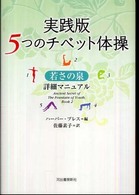Full Description
Content and Language Integrated Learning (CLIL) has now become a feature of education in Europe from primary school to university level. CLIL programmes are intended to integrate language and content learning in a process of mutual enrichment. Yet there is little consensus as to how this is to be achieved, or how the outcomes of such programmes should be measured. It is evident that a further type of integration is required: that of bringing the practice of CLIL into closer contact with the theory. In this, it is necessary to establish the role played by other fundamental aspects of the learning process, including learner and teacher perspectives, learning strategies, task design and general pedagogical approaches. The first part of this book provides a variety of theoretical approaches to the question of what integration means in CLIL, addressing key skills and competences that are taught and learned in CLIL classrooms, and exploring the role of content and language teachers in achieving an integrated syllabus. The second part takes specific cases and experimental studies conducted at different educational levels and analyses them in the light of theoretical considerations.
Contents
Introduction
Part one: Integration in theory: Conceptual approaches
Ana Halbach: Teaching (in) the foreign language in a CLIL context: Towards a new approach
Aoife Ahern: The roots of CLIL: Language as the key to learning in the primary classroom
Yolanda Ruiz de Zarobe and Victoria Zenotz: Strategic instruction in primary education: A pathway to successful learning in content-based contexts
Jill Surmont, Piet van de Craen, Esli Struys and Thomas Somers: Evaluating a CLIL student: Where to find the CLIL advantage
Part two: Integration in practice: The classroom perspective
Dominik Rumlich: Prospective CLIL and non-CLIL students' interest in English (classes): A quasi-experimental study on German sixth-graders
Ignacio Pérez-Ibáñez: Addressing our students' needs: Combined task-based and project-based methodology in second language and CLIL courses
Felipe Jiménez, Agata Muszyńska and Maite Romero: Learning processes in CLIL: Opening the door to innovation
David Lasagabaster: Content versus language teacher: How are CLIL students affected?
Ruth Breeze: Identifying student needs in English-medium university courses
Javier Barbero and Jesús Ángel González: CLIL at university: Transversal integration of English language and content in the curriculum
Directory of CLIL projects and resources
Index








